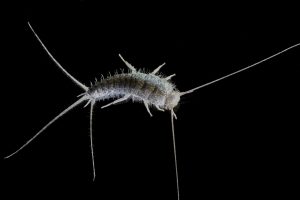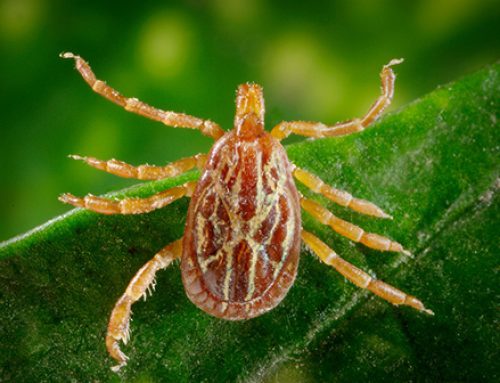Have you ever been startled by a tiny wriggling fish in the corner of your closet, only to have it quickly dart away?
 Silverfish are small, wingless insects with a distinctive tapered, carrot-shaped body covered in silvery scales, giving them their name. Typically measuring between half an inch to one inch in length, they have two long antennae on their head and three tail-like appendages on their rear. Silverfish are nocturnal creatures and are often found in dark, damp areas, such as basements, kitchens, and bathrooms.
Silverfish are small, wingless insects with a distinctive tapered, carrot-shaped body covered in silvery scales, giving them their name. Typically measuring between half an inch to one inch in length, they have two long antennae on their head and three tail-like appendages on their rear. Silverfish are nocturnal creatures and are often found in dark, damp areas, such as basements, kitchens, and bathrooms.
Silverfish are scavengers that primarily feed on carbohydrates, sugars, and starches found in various materials, including paper, glue, textiles, and even food crumbs. They are known to consume wallpaper, book bindings, and clothing, causing damage to these items over time. When feeding, silverfish use their specialized mouthparts to scrape and chew on surfaces, leaving behind irregular holes and damage. While they are not harmful to humans, their feeding habits can be destructive to certain household items, making them a nuisance pest in homes.
![]() Silverfish infestations are rare but there are some conditions that can attract silverfish. Therefore, it’s crucial to eliminate their preferred environments. Reduce humidity levels in your home by using dehumidifiers and fixing any water leaks. Seal cracks and gaps in walls, windows, and doors to deny silverfish entry points. Store food items in airtight containers, and regularly clean and declutter areas where silverfish may find shelter, such as basements, attics, and closets. Additionally, consider using natural repellents like cedar, and periodically vacuum and dust to eliminate potential food sources and eggs.
Silverfish infestations are rare but there are some conditions that can attract silverfish. Therefore, it’s crucial to eliminate their preferred environments. Reduce humidity levels in your home by using dehumidifiers and fixing any water leaks. Seal cracks and gaps in walls, windows, and doors to deny silverfish entry points. Store food items in airtight containers, and regularly clean and declutter areas where silverfish may find shelter, such as basements, attics, and closets. Additionally, consider using natural repellents like cedar, and periodically vacuum and dust to eliminate potential food sources and eggs.
If you are still seeing silverfish, remember that the most important step you can take when dealing with silverfish is to call us at 1-800-572-9797 for an inspection.





